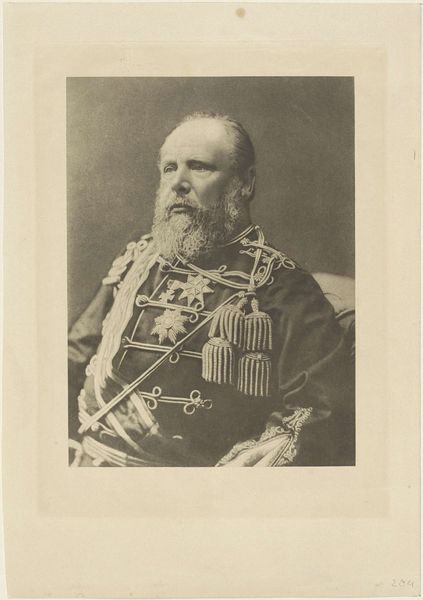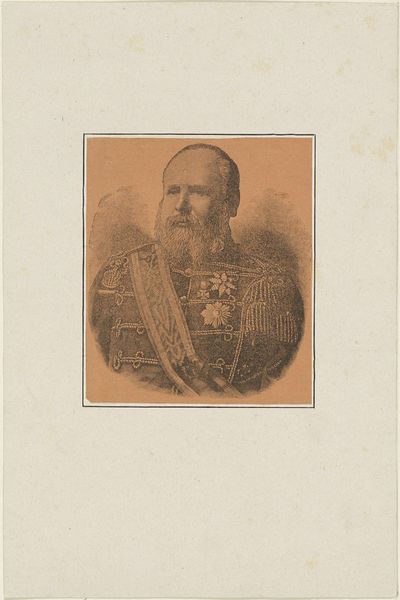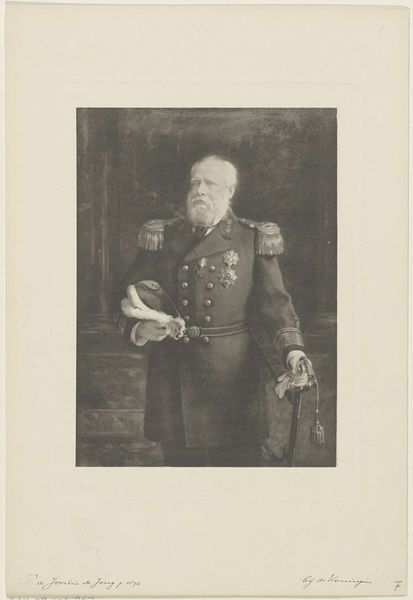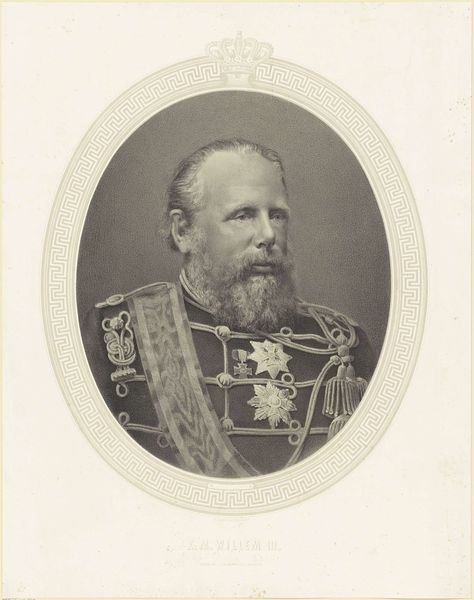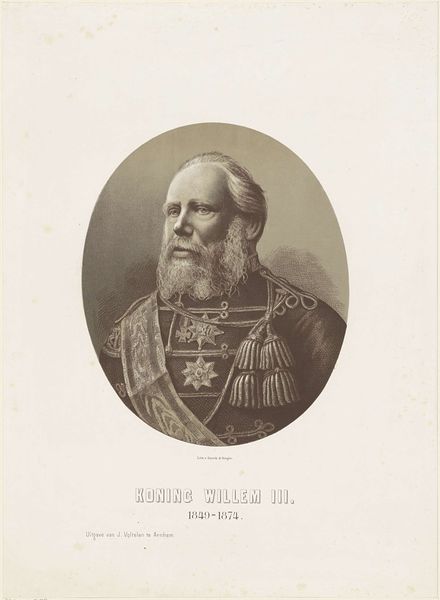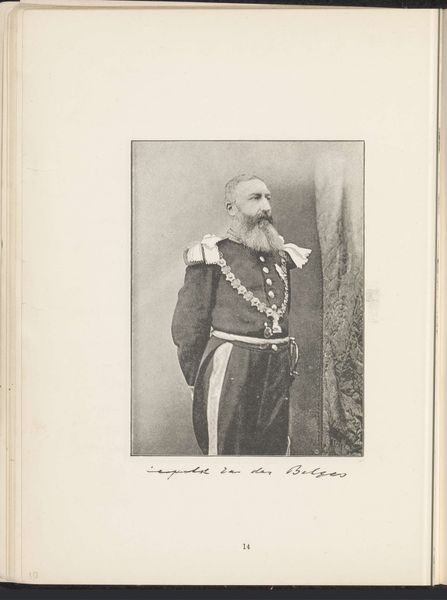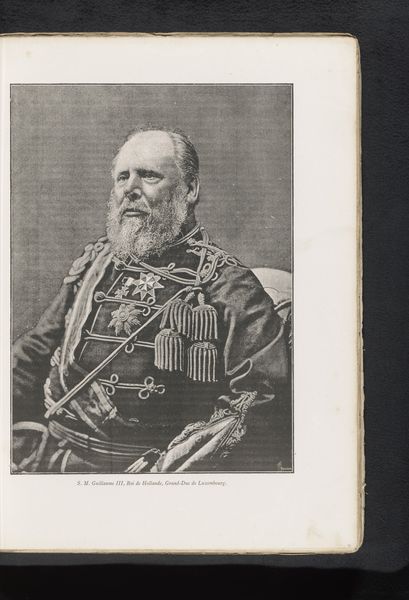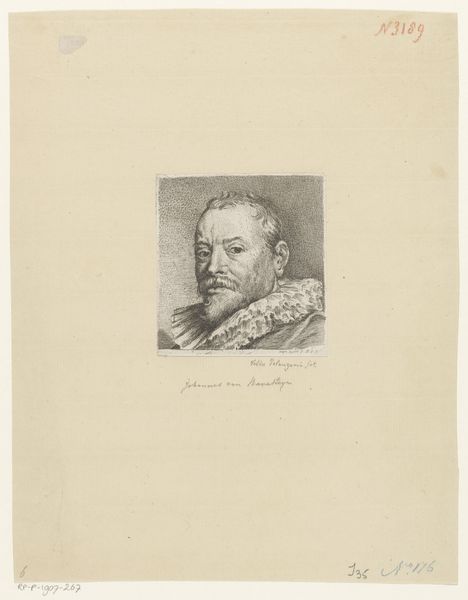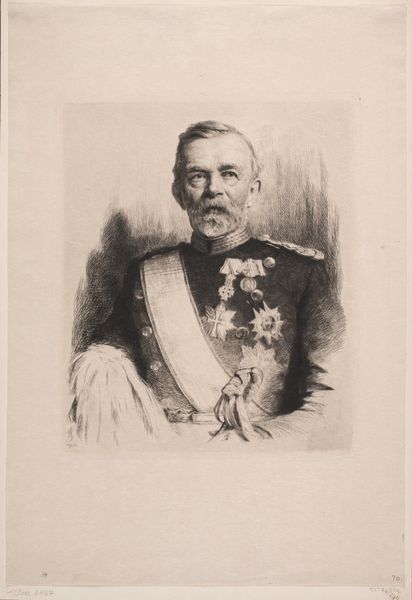
drawing, print, engraving
#
portrait
#
drawing
# print
#
old engraving style
#
pencil drawing
#
academic-art
#
engraving
#
realism
Dimensions: height 461 mm, width 348 mm
Copyright: Rijks Museum: Open Domain
Curator: Here we have an interesting piece: a print, more specifically an engraving, titled "Portret van Willem III, koning der Nederlanden," dating sometime between 1890 and 1949, made by an anonymous artist. Editor: It immediately strikes me as somber, almost heavy. The stark black and white adds a real weight to his image. Curator: Indeed, the symbolism is quite layered. The darkness could be interpreted as reflecting the political climate of the time, or perhaps even the burden of the crown itself. Look at the detailed rendering of his attire, especially the ornate decorations. Editor: The ornamentation feels less about splendor and more about control. What material realities did creating these prints involve? What was the division of labor like? And who were these prints *for*? The anonymous creator certainly indicates something about artistic labor... Curator: The printing process, typically involving copper or steel plates, allowed for mass production and wide distribution of his image – shaping his legacy, of course. Each symbol, from the stars to the tassels, has a pre-determined significance tied to royalty, status, power. It builds a cumulative meaning through repetition. Editor: It's fascinating how a relatively "simple" print contains such complexity, once you begin to unravel the economic and social forces it involved. The materiality carries so much meaning itself, beyond just the representation. It encourages questions about value, and the labor of image making. Curator: Agreed. It reveals not just a ruler’s image but a cultural moment defined by industrial production and enduring traditions. This portrait captures a sense of timelessness while revealing a specific time. Editor: Seeing how the production conditions affect its symbolic meaning definitely changes my perspective. Curator: Exactly, now you have two lenses!
Comments
No comments
Be the first to comment and join the conversation on the ultimate creative platform.
